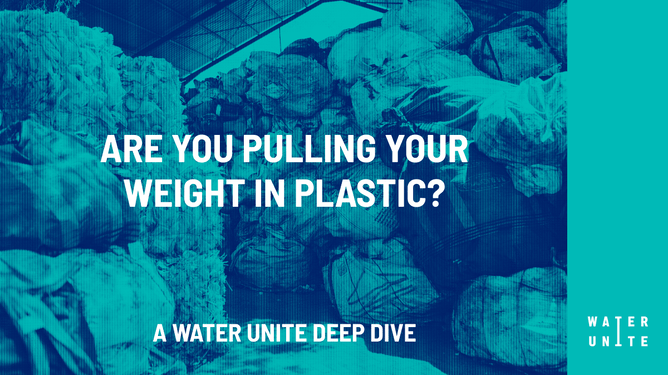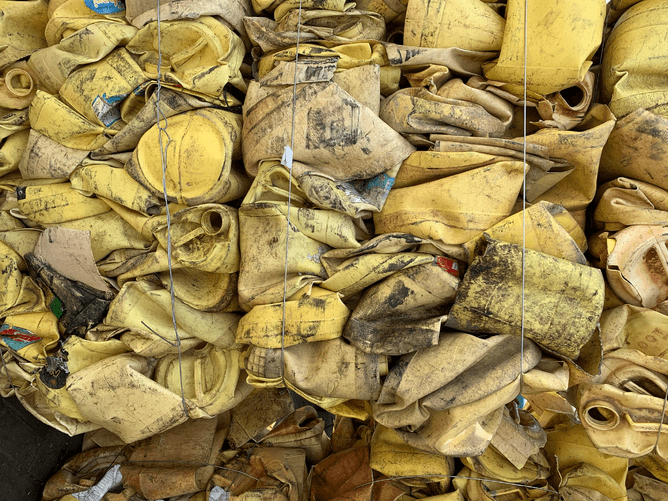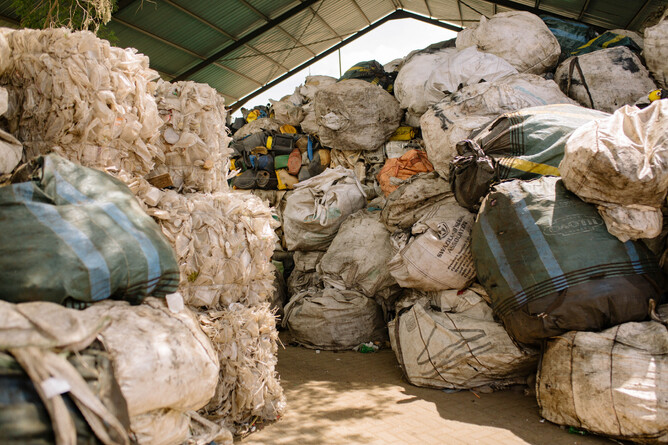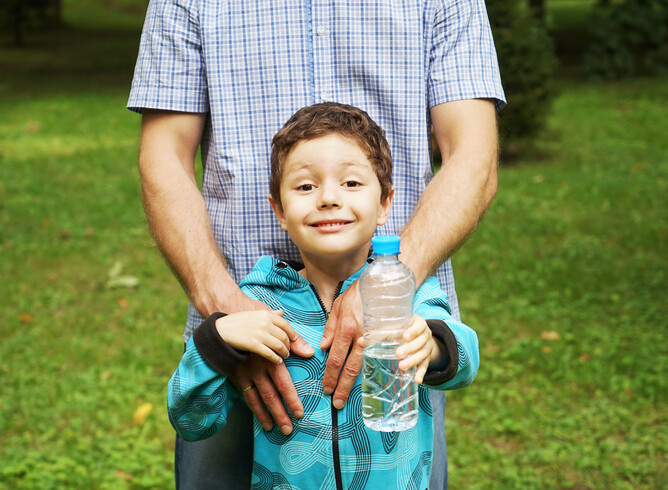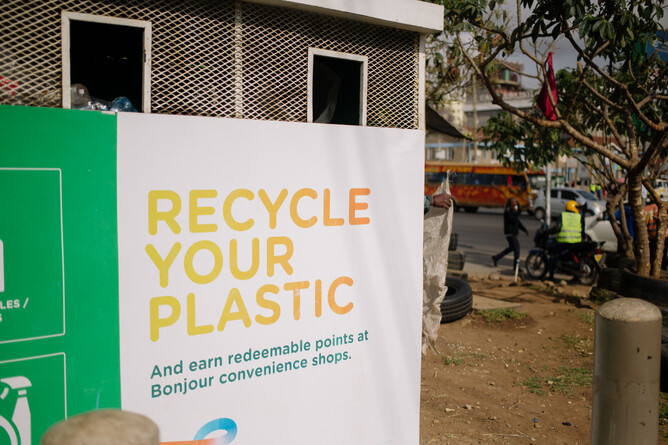The linear “take-make-waste” approach to consumerism is on the way out, and circular economy solutions are coming in hot. However, the plastic pollution crisis we face requires us to make significant behavioural and infrastructural changes in terms of how we view the use and consumption of plastics across every sector. Whilst there is an emphasis on consumers to shop more consciously, there is a higher order of responsibility that brands, retailers and manufacturers need to take on board to reduce their own plastic waste as well as the waste attributed to their products.
There are many moving parts that need to be considered when looking for how we can solve our global plastic problem. Not only does a company have to consider the plastic waste associated with its products, including packaging, they must also account for the plastic waste across its entire supply chain and the plastic waste produced from its day-to-day business activities, even considering consumer behaviour and perspective on their products.
Product Level
In terms of reducing a company’s plastic footprint given their products, the solutions generally revolve around product design e.g. reducing packaging, using alternative materials as packaging, ensuring their product is recyclable and or made from 100% recycled plastic, amongst other creative solutions. So why isn’t every fast moving consumer goods (FMCG) product sustainable already?
One element of the answer is cost. Larger organisations may have the capital to redesign their products. However for many companies, nascent virgin plastic remains to be the cheapest available option. Additionally, the cost associated with recycling efforts can further disincentivise sustainability for some organisations (The Economist 2023). Plastic contamination increases cost further as it reduces the quality and yield of recycled plastic.
There is also a sector factor here. Moving away from FMCG products briefly, the medical sector requires sterility as a standard for any product or tool they use. The easiest and cheapest way to do this to scale is by using plastic. The NHS alone produces 2500 tonnes of plastic waste every day (Stereoplast Healthcare 2023). Fully recycled first aid kits are becoming more available to the market and there are some plastic alternatives such as bioplastics. But will alternatives match up in terms of durability and storage life? Research and development into these products is key and it may be easier for other sectors to make this transition first.
Supply Chain Level
Whilst reducing your product impact is a commendable step, realistically companies need to look at their entire supply chain to eliminate plastic waste. This is about going above and beyond the rhetoric of “business as usual”. This is a global problem without borders so the solution has to be collaborative.
Going “above and beyond” is a featured detail of many sustainable methodologies and assessments that are used to quantify a company’s sustainability, for example the B-Corp certification Future Fitness Business Benchmark. This may involve a company engaging with their entire supply chain, not only to reduce their own plastic footprint but to collaboratively help suppliers and other members of their supply chain to reduce theirs as well. This may involve diversifying suppliers or choosing more sustainable ones instead. Some may even consider that a further next step for many organisations would be to work with domestic and international governments in supporting and improving their recycling infrastructure in order to close the gap in the plastic lifecycle and thereby prevent more plastic ending up in our natural environment.
Connecting manufacturers and third parties with independent plastic recyclers, for example following the business model of Mr. Green Africa and Unilever, could provide some form of a solution for sourcing recycled products at an affordable price. However, this will have a limited effect if the third parties are not accountable for what happens at the end of a products’ consumer journey. Although this model relies on using decentralised entities to provide recycling solutions, this can help to leverage income and economic growth in the areas that independent recycling organisations operate. Further, this system encourages brands to diversify their supply chains which is generally considered be a positive step in this transition and helps to solidify the market.
Policy Level
In order to live in a “climate resilient” society, we must have the economic and social capacity to deal with hazardous trends, events and disturbances that are a threat to our climate. More and more governments have identified the threat of plastic pollution on climate resilience due to its fossil fuel-intensive production. Even small changes such as the U.K.’s recent legislation banning wet-wipes is a start. In Kenya, disposable plastic bags have been prohibited and those who continue to use them may face hefty fines or even prison sentences.
Creating policies that work for everyone is an complex task involving multiple stakeholders, not all of which agree on best practice. Scotland’s recently delayed Deposit Return Scheme (DRS) is a prime example of this where the glass sector wanted glass products removed from the policy (Watson 2023). DRSs are used across the world to encourage individuals to recycle bottles and cans and other plastic waste.
These small changes in policy are vital in reducing the overall plastic waste and for providing incentives to act more sustainably, however they do not provide relief to the deeper problems of enterprise-sourced pollution and inefficient recycling infrastructures.
Consumer Level
Yes, there is some emphasis on consumer choices. Is this product responsibly sourced? Is the manufacturer pulling their weight in plastic? What is their plastic footprint? A conscious consumer may ask question like these when considering which product to buy. They may want to only purchase products that are made from 100% plastic, are fully recyclable or may have another positive or neutral environmental impact. So why isn’t everyone already buying sustainable products?
This question brings us back to cost. Not everyone can afford the so called “sustainability tax”. The often marked-up price of these products is often correlated with a company reassessing its supply chain to move away from the cheapest, fastest means of production and opting for a more sustainable route that may reduce their plastic footprint. Therefore, for some people, these products are unaffordable and the cost of living crisis has increased this disparity. Kantar’s Sustainability Sector Index (2022) showed that:
65% of people questioned want to live more sustainably but the cost of sustainable products is a barrier for them
For those that are financially “comfortable”, 56% actively shop for products from sustainable companies. This figure drops in demographics that are less financially stable to 35%, which is exasperated by the cost of living crisis.
Recycling Sector Level
Each country’s plastic problem is somewhat unique. Solutions that work in the U.K. may not be applicable in Kenya. This is in part due to Kenya’s historical waste import agreements, by which many countries have agreements to export their waste to other countries in exchange for investment in the importee’s recycling sector. After the sector moved away from exporting waste to China in 2018, exports to Africa quadrupled in 2019, yet many African countries at this time did not have the capacity to deal with their own recycling, let along imports (Whitehouse 2020).
There are many other factor’s affecting Kenya’s recycling sector’s efficiency, including governance, stakeholder engagement, system capacity and funding of the sector. The Economist’s Plastic Management Index (The Economist 2021) rated 25 countries on each of these pillars (except funding) using 44 indicators. The results showed Kenya performing in the bottom 3 except for stakeholder engagement where they performed marginally better at 19th.
Kenya’s recycling sector is underfunded, restricting its current efficiency. As of 2020, only 8% of plastic waste was recorded as recycled in Kenya (Paruta et al. 2020). Some of Kenya’s recycling is handled by the informal sector, and even more is dumped illegally, contaminating the environment and furthering the spread and damage of microplastics. An estimated 69% of Kenya’s plastic waste ends up in bodies of water, furthering the damage due to the connectivity of water (International Waste Platform 2022).
This is not without a silver lining; independent plastics recycling companies, such as Mr. Green Africa and Gjenge Makers, have emerged with circular economy solutions to lessen the burden of the current recycling infrastructure. Mr. Green Africa’s model provides employment and income opportunities in areas where income is limited which incentivises plastic collection in the informal sector, lessening local plastic pollution.
Moving forward
There can be no room for any disconnect between plastic pollution and climate change. We cannot remain at a point in history where we are still attempting to prove and explain why our linear “take-make-waste” approach needs to end and why we need to take on a climate resilient approach across sectors. Many companies are already making the “green transition” but we can only move as fast as our slowest team mate.
Any brand or manufacturer that is actively assessing their supply chain to reduce their plastic pollution footprint is already taking a step in the right direction, so long as this newfound sense of responsibility extends beyond skin-deep, reputational motivations. If it isn’t, the solutions they produce will be superficial and represent short term change. Co-operation between the private and public sector is key here as equally, the responsibility needs to be recognisably shared across the entire plastics network, from plastics recyclers to manufacturers, third parties and governmental departments.
Bibliography
Elliott, T. et al. (2018) Plastic packaging waste flows in Kenya. Available at: http://eng.mst.dk/media/189822/kenya-plastic-packaging-report_final.pdf.
Houlton, C. (2022) Data: Cost of living prevents 65% of people from buying sustainable products, Latest Grocery Industry News. Available at: https://www.grocerygazette.co.uk/2022/09/14/cost-of-living-sustainable/.
International Waste Platform (2022) Kenya – clean up Kenya . Available at: https://internationalwasteplatform.org/clean-up-kenya/.
Kantar (2022). ‘Sustainability: from ambition into brand action Six key takeaways for brands willing to seek opportunity in sustainability’.
Paruta et al. (2020, December). Final Report for Kenya [PowerPoint slides]. IUCN, UNEP, Life Cycle Initiative, Ministry of Environment and Forestry, NEMA.
Stereoplast Healthcare. (2023) How are plastics recycled in healthcare?, Steroplast Healthcare. Available at: https://www.steroplast.co.uk/knowledge-base/how-are-plastics-recycled-in-healthcare.html#:~:text=The%20UK%20is%20the%20largest,day%20by%20the%20NHS%20alone.
The Economist (2021) Plastics Management Management index index and sustainable use of plastics. Available at: https://backtoblueinitiative.com/wp-content/uploads/2021/09/Plastics-Management-Index-Whitepaper_sep29.pdf (Accessed: 01 June 2023).
The Economist (2023). Circular economy rhetoric needs a reality check. Available at: https://impact.economist.com/sustainability/circular-economies/circular-economy-rhetoric-needs-a-reality-check.
Watson, C. (2023) Why has Scotland’s deposit return scheme been delayed?, BBC News. Available at: https://www.bbc.co.uk/news/uk-scotland-64624421.
Whitehouse, D. (2020). Kenya is not a dumping ground for US plastic. [online] The Africa Report.com. Available at: https://www.theafricareport.com/51072/kenya-is-not-a-dumping-ground-for-us-plastic/.

